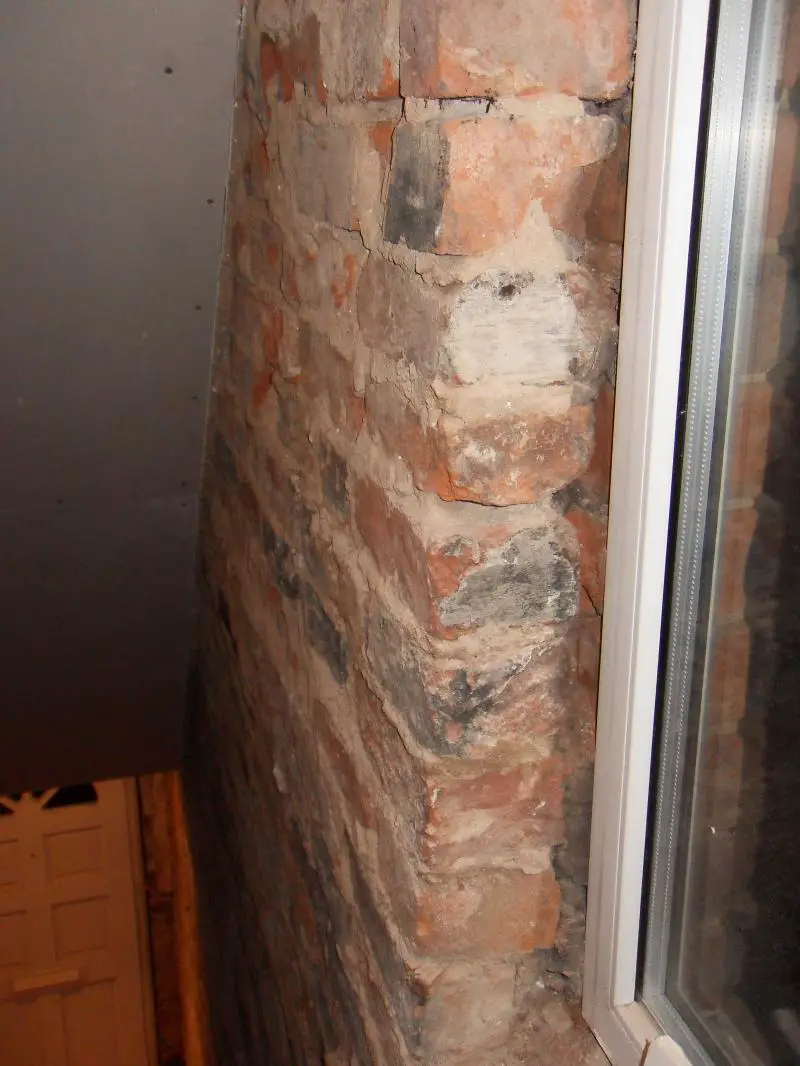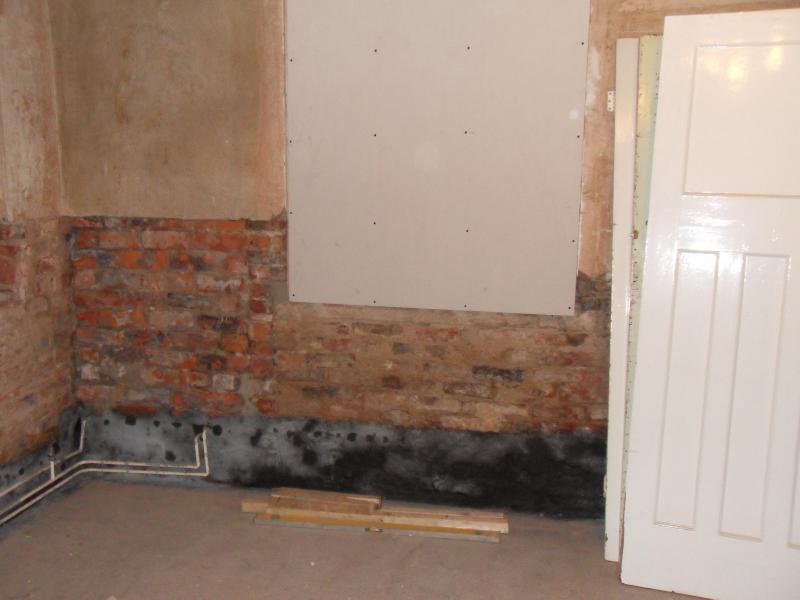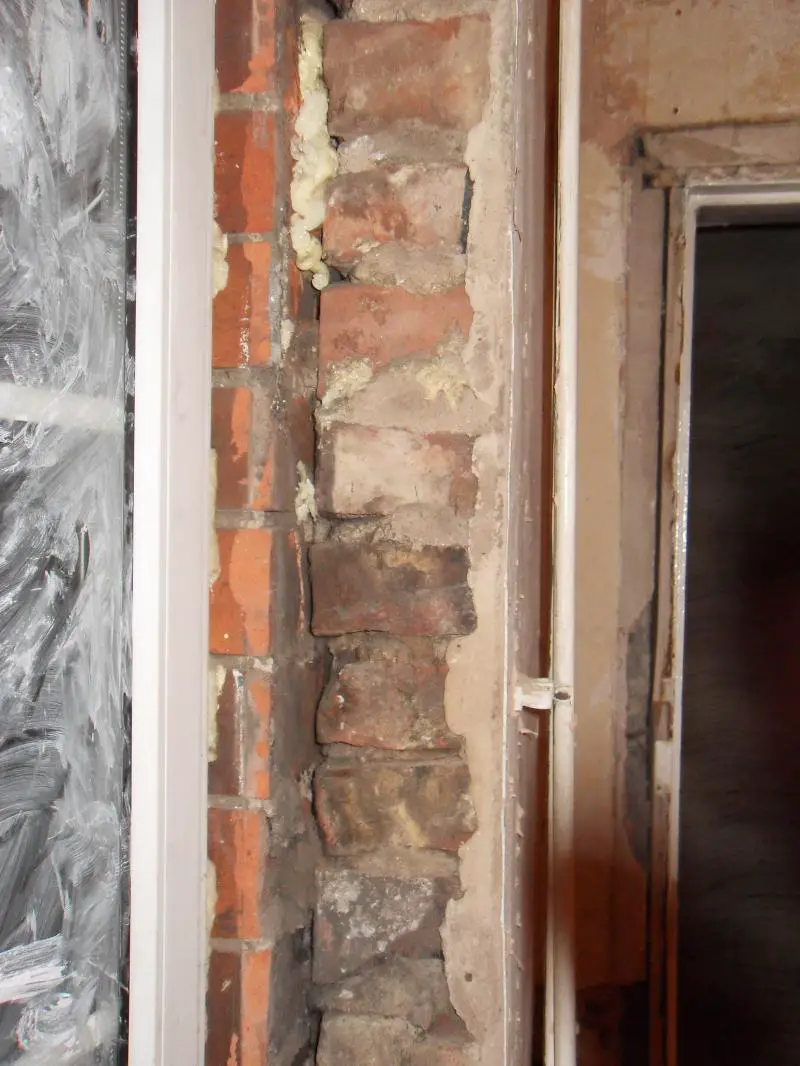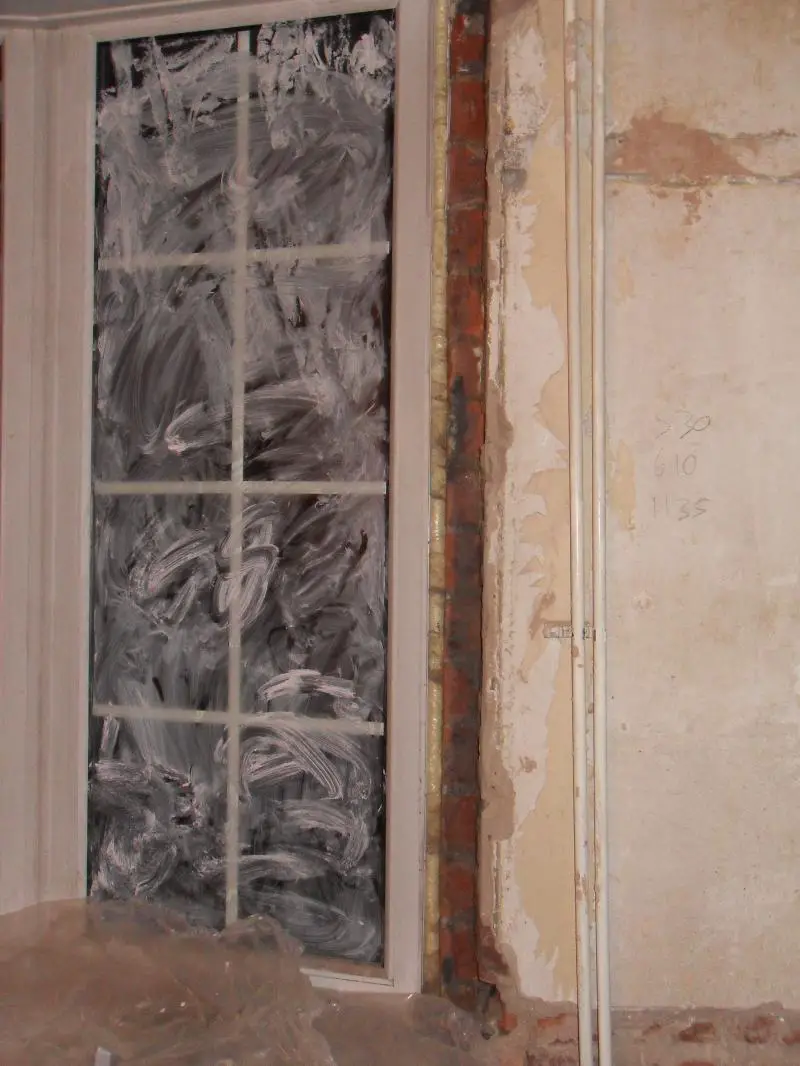Hi everyone!
Newly registered on the forum but have been a silent watcher from the sidelines for some time and am hoping to get some help and advice
I am in the process of renovating my first house and have some questions about the rerendering/plastering after DPC injection.
The house is 1930's semi, and strangely was demolished prior to this, with the old original bricks used internally and new facing bricks used on the external leaf, these are different sized bricks and mean the mortar bed joints do not line up. The walls may aswell be solid as the cavity is basically non-existent and bridged all over from what I can see.
There is a dpc present on the external leaf although is below ground for the majority of the perimeter of the house due to pavements being built up over the years etc and there is no way to reduce this level. The house appears to be built straight on the ground and rising damp was visible in a few of the walls.
I have removed plasterwork to a height of 1200mm or 500mm above the rising damp marks and injected Dryzone cream from the inside and outside into the mortar joints.
I have used KA Tanking slurry on external walls and also fully tanked the two chimney breasts following advice gathered online and from a damp 'specialist' along with cutting out holes ready to put vents on.
I am wanting to have the whole house replastered, along with new kitchen etc. Some questions I have are as follows:
- The north facing gable wall was very cold to the touch with condensation noticeable, I have removed everything on this wall back to brick and would like some advice on whether to have it rerendered with sand/cement, or I have heard that the use of Thistle Dri-Coat can be used in these situations also? I understand that where the plaster has been removed for the DPC injection, I should rerender the walls downstairs incorporating a salt inhibitor (SBR?) in the first coat as well as sealing the wall with this?, or should I use the Thistle Dri-Coat?
- Did I need to tank the entire chimney breast up to the ceiling? Also I injected this with dryzone but not sure I needed to do this either?
- The open chimney I am wanting to have plastered and have had a light fitted in the soffit, how would be the best way to do this, I have done the first layer of tanking, if I fix wood to it and board the soffit wont I ruin the integrity of the tanking system?
- Some of the reveals I have made up using board adhesive to fix plasterboard into them, although I have now thought I maybe should have had the renderer form these to avoid the damp spots coming through?
- One of the windows is showing the plaster beads rusting which is coming through to the plaster slightly, do I need to remove these or can I put the plaster skim beads over as they are?
- Do I need to remove wooden plasterbeads or can these be left in and new metal beads fixed ontop?
- I am leaving the existing wooden window lintels in, but have removed the plaster around these where cracks are present, I have started to fix metal mesh to these crack with plugs, screws and washers but is taking me a while. Would masonry nails be okay for this or am I wasting my time and will they just crack again anyway?
- I have boarded over an old alcove in the room which was where the old back door or window used to be years ago, should I use mesh on the wall to prevent any cracking when it gets rendered? You can see the dark shading which is where I presume the ground is wetter and the tanking is working?
- Do I need to render underneath the stairs where I have injected the dryzone and tanked the wall? Or should I just brick back up the wall?
Very sorry for the all the amateur questions but just want to get it done right and not have to redo it again in the future. All comments and critism would be much appreciated!
Thanks in advance!
Liam
Newly registered on the forum but have been a silent watcher from the sidelines for some time and am hoping to get some help and advice
I am in the process of renovating my first house and have some questions about the rerendering/plastering after DPC injection.
The house is 1930's semi, and strangely was demolished prior to this, with the old original bricks used internally and new facing bricks used on the external leaf, these are different sized bricks and mean the mortar bed joints do not line up. The walls may aswell be solid as the cavity is basically non-existent and bridged all over from what I can see.
There is a dpc present on the external leaf although is below ground for the majority of the perimeter of the house due to pavements being built up over the years etc and there is no way to reduce this level. The house appears to be built straight on the ground and rising damp was visible in a few of the walls.
I have removed plasterwork to a height of 1200mm or 500mm above the rising damp marks and injected Dryzone cream from the inside and outside into the mortar joints.
I have used KA Tanking slurry on external walls and also fully tanked the two chimney breasts following advice gathered online and from a damp 'specialist' along with cutting out holes ready to put vents on.
I am wanting to have the whole house replastered, along with new kitchen etc. Some questions I have are as follows:
- The north facing gable wall was very cold to the touch with condensation noticeable, I have removed everything on this wall back to brick and would like some advice on whether to have it rerendered with sand/cement, or I have heard that the use of Thistle Dri-Coat can be used in these situations also? I understand that where the plaster has been removed for the DPC injection, I should rerender the walls downstairs incorporating a salt inhibitor (SBR?) in the first coat as well as sealing the wall with this?, or should I use the Thistle Dri-Coat?
- Did I need to tank the entire chimney breast up to the ceiling? Also I injected this with dryzone but not sure I needed to do this either?
- The open chimney I am wanting to have plastered and have had a light fitted in the soffit, how would be the best way to do this, I have done the first layer of tanking, if I fix wood to it and board the soffit wont I ruin the integrity of the tanking system?
- Some of the reveals I have made up using board adhesive to fix plasterboard into them, although I have now thought I maybe should have had the renderer form these to avoid the damp spots coming through?
- One of the windows is showing the plaster beads rusting which is coming through to the plaster slightly, do I need to remove these or can I put the plaster skim beads over as they are?
- Do I need to remove wooden plasterbeads or can these be left in and new metal beads fixed ontop?
- I am leaving the existing wooden window lintels in, but have removed the plaster around these where cracks are present, I have started to fix metal mesh to these crack with plugs, screws and washers but is taking me a while. Would masonry nails be okay for this or am I wasting my time and will they just crack again anyway?
- I have boarded over an old alcove in the room which was where the old back door or window used to be years ago, should I use mesh on the wall to prevent any cracking when it gets rendered? You can see the dark shading which is where I presume the ground is wetter and the tanking is working?
- Do I need to render underneath the stairs where I have injected the dryzone and tanked the wall? Or should I just brick back up the wall?
Very sorry for the all the amateur questions but just want to get it done right and not have to redo it again in the future. All comments and critism would be much appreciated!
Thanks in advance!
Liam


















